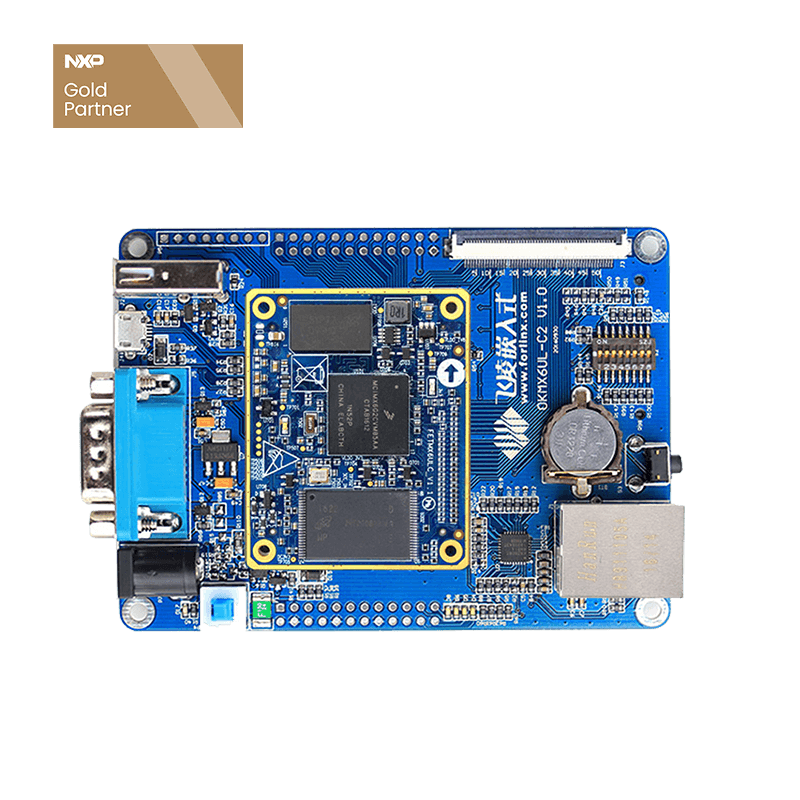
i.MX6UL Processor Q&A
Q&A
1
Which operating systems does the official BSP support? Does it have a GUI? What is the development and debugging environment?
Freescale officially supports Linux Yocto BSP, kernel version 3.14.38, with a graphical interface. Host-side development environment is based on Ubuntu system, JTAG debugging. Other operating systems including RTOS are currently being evaluated.
2
What core, does it have hardware floating point, what is its main frequency, and what is its power consumption?
Single-core ARM Cortex-A7, processor clocked at 528MHz, adopts NEON technology to accelerate multimedia and signal processing algorithms, and has a floating-point unit. The typical test program runs at full speed, and the power consumption is only 269mW.
3
Has it been mass-produced, how long is the product delivery period, and how long is the product life cycle?
Has been mass-produced, please consult the agent for delivery, the product has a long-term supply guarantee for more than ten years.
4
What applications are the products designed for, and is there a corresponding solution?
For the Internet of Things, electronic payment, smart home, electricity, automotive, control, smart home, medical, industrial and other fields, solutions will be launched one after another. You can currently consult IDH Baoding Forlinx Embedded Technology Co., Ltd.
5
What are the product advantages and features?
Low power consumption, high energy efficiency, and high safety. i.MX6UL uses the Coretex-A7 core, which has an ultra-high energy efficiency ratio, which can directly replace the earlier ARM9/ARM11 products. Compared with the Cortex-A9 core, its energy efficiency ratio is 1.7 times that of the A9 core.
6
How many UARTs, CAN, and Ethernet?
The i.MX6UL-3 model supports 8 UARTs, 2 CANs, and 2 Fast Ethernet (integrated MAC).
7
What kind of display screens are supported? Can a larger screen be connected, what are the resolution limitations, and does it support touch?
Support single channel display output, 24bit parallel LCD interface, maximum resolution 1366*768. The official development board is a 4.3-inch screen and supports touch. The development board reserves the place for the HDMI interface chip, which users can choose by themselves.
8
Why is high security?
It can meet the security authentication requirements of electronic payment, with hardware encryption algorithm acceleration; DRAM encryption; anti-detection mechanism; secure storage; random number generator and many other security features.
9
How about the video codec processing capability?
i.MX6UL adopts software codec and provides a software codec library, which can realize 480P playback. If you have higher requirements for video processing, it is recommended to use i.MX6D/Q, which has stronger computing power and hardware video codec.
10
Is there a power supply plan? Is there a corresponding PMIC power management solution, and does it support charging management?
You can use a DCDC-LDO discrete power supply solution, or you can use Freescale PMIC power management chips. PF3000/3001. PMIC does not currently support lithium battery charging management.
11
What is the price of the development board and where can I buy it?
Forlinx Embedded has launched a variety of i.MX6UL development boards with different functional interfaces, you can buy i.MX6UL development boards here
12
What SMT are there?
Currently it is 14mm*14mm 289Pin BGA and 9mm*9mm 272Pin BGA.
13
What is the memory type and maximum capacity? What types and capacities are supported by FLASH and SD cards?
The memory supports 16-bit LP-DDR2, DDR3/DDR3L, up to 2G, and the on-board capacity of the official development board is 512MB. Support QSPI NOR FLASH, NAND FLASH, SD Card, with no limit on capacity.
14
What type of USB is there and is there a PHY?
Two USB2.0 interfaces, integrated PHY, support USB Host and USB OTG.
15
Are there any car-regulated products and solutions, such as car lights, recorders, and dashboards?
i.MX6UL has automotive-grade products that can be used for automotive-related product development, and related reference designs will be launched one after another.
16
How about the technical support in China?
Optimized for the application needs of the Chinese market, there will be more local technical support in China in the future.
17
Is there a mature ePOS solution?
i.MX6UL has made many optimizations for payment security, has a very high security, and meets the relevant security standards of the payment industry. For the plan, please consult the relevant agent.
How is the software and hardware compatibility with other products in the i.MX6 series?
i.MX6UL and i.MX6 series of other products are software compatible, and both use Freescale's official Linux BSP, but the hardware is not Pin to Pin compatible.
19
Does it support Bluetooth, WIFI, 3G/4G?
The chip does not have a built-in wireless function, you can expand it yourself if you need it. Can use SPI, UART, I2C, SDIO, USB, Ethernet interface to expand. Forlinx's embedded development board brings out Bluetooth, WIFI, and 3G/4G.
20
What is the temperature range?
Consumer grade temperature range is 0~95℃; commercial grade temperature range is -20~105℃; industrial grade temperature range is -40~105℃; automotive grade temperature range is -40~125℃.
21
What are the startup methods? What is the startup time and sleep wake-up time?
You can use NAND, NOR, and SD to boot in multiple ways. The official BSP Linux can boot in 10 seconds and can be quickly booted. The theoretical wake-up time in low power consumption mode, suspend mode, and SNVS mode is milliseconds.
22
How many layers of boards can be routed to the PCB? Are there schematics and design guidelines?
The 4-layer board can be routed to the PCB. For details, please refer to the official EVK development board design.
23
Does it have a built-in GPU and what is the 3D performance?
Does it have a built-in GPU and what is the 3D performance?
24
What is the camera interface?
16-bit parallel CSI interface.
25
Is there a built-in audio interface, and does the development board support an audio interface?
The chip has no built-in audio codec and needs to be external. There is an audio codec chip on the official development board, which can be used directly.



